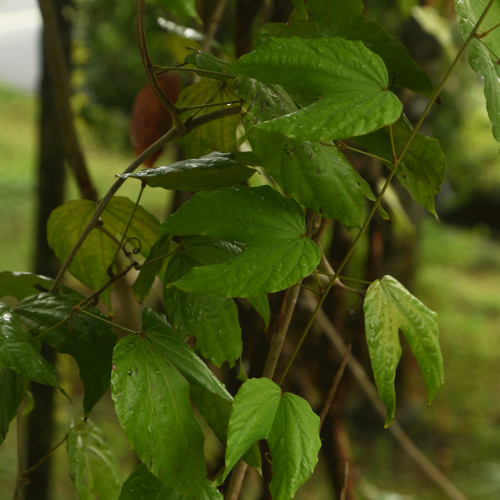Family Name
CAESALPINIACEAE
Scientific Name
Bauhinia integrifolia Roxb. Ssp. cumingiana var. cumingiana K. Larsen & S.S. Larsen
Synonyms
Bauhinia cumingiana (Benth.) F.-Vill.; Phanera cumingiana Benth.; Phanera integrifolia (Roxb.) Benth. Subsp. cumingiana (Benth.) de Wit.
Local Names
Agki (Pamp.); Agpoy (Tag.; Bik.) arabahaw (Mbo.); aro (Bag.) balagon (Chab.); banot (Tag.); impid (Bik.); kalibangbang (P. Bis.); kailibangbang anai (Mbo.); lupig (Tag.); ogpoy (Tag.); oplig (Ilk.); salibangbangan (S. L. Bis, P. Bis.); taghiwalay (Tag., Pamp.); umpig (Ibn.); umpik (Ibn.); uplig (Ilk.) upling (Ilk.)
Botanical Description
A twining liana equipped with tendrils. Stem 0.3-0.5 cm or more in diameter, without exudate, smooth to slightly fissured; outer bark beige; inner bark brown. Tendrils woody, hooked or circinnately coiled, greenish turning beige, always in pair, the pairs of tendrils originating from a common stalk arising from lateral branches. Leaves alternately arranged, simple, entire, broadly ovate, bilobed, apex of each lobe acuminate, base cordate 6.8-12.4 cm long, 7.5-12.5 cm broad, glabrous except for the ferruginous pubescent veins on the lower surface; petiole 5-8 cm long, 0.05-0.1 cm in diameter, hairy and swollen at both ends, venation palmately netted, actindromous with 9 prominent nerves. Inflorescence in dense panicles composed of racemes, with a ferruginous pubescent axis. Flowers bisexual; calyx splitting into 2 (or 3) reflexed lobes; petals obovate with crenulate margin, 8-15 mm, orange turning red, outside densely rusty hirsute; stamens 3, fertile; filaments filiform, hairy base, shorter than petals; anthers ellipsoid, 3mm long; staminodes 2, minute; ovary appressed pubescent; style pubescent to sparsely hairy towards the stigma; stigma capitate. Fruit a pod, 2o cm long, elongated with tapering ends. Seed 5-8 flattened, ovate-orbicular, 2 cm in diameter.
Distribution Ecology
Borneo and throughout the Philippines. Common in lowland forests.
Other Economic Uses
It is rich in tannin. The plant extract exhibits antiviral properties (Taylor et al. 1996).
Volume Estimate
In Quezon, 2.62lm/ha., in Nueva Vizcaya, 198.75lm/ha and in Surigao, 3lm/ha.

